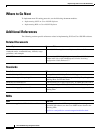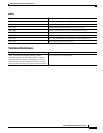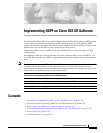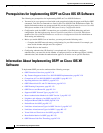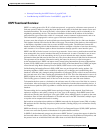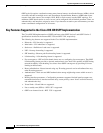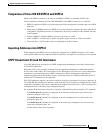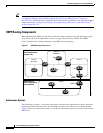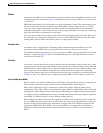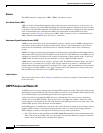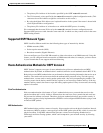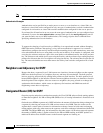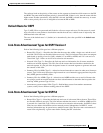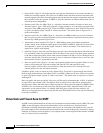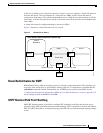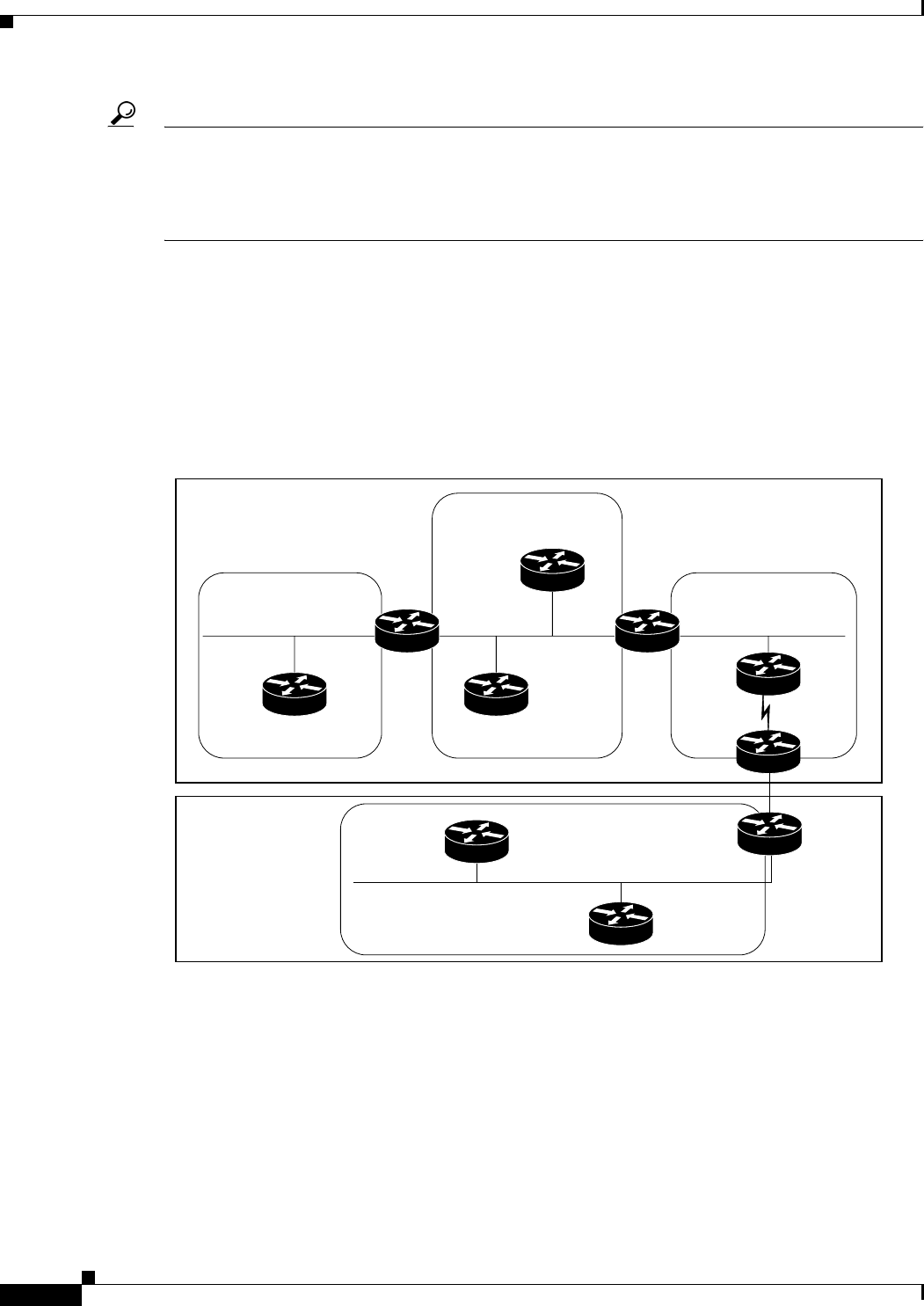
Implementing OSPF on Cisco IOS XR Software
Information About Implementing OSPF on Cisco IOS XR Software
RC-132
Cisco IOS XR Routing Configuration Guide
Tip Understanding hierarchical CLI and CLI inheritance saves you considerable configuration time. See the
“Configuring Authentication at Different Hierarchical Levels for OSPF Version 2” section on
page RC-155 to understand how to implement these fundamentals. In addition, Cisco IOS XR examples
are provided in the “Configuration Examples for Implementing OSPF on Cisco IOS XR Software”
section on page RC-187.
OSPF Routing Components
Before implementing OSPF, you must know what the routing components are and what purpose they
serve. They consist of the autonomous system, area types, interior routers, ABRs, and ASBRs.
Figure 6 illustrates the routing components in an OSPF network topology.
Figure 6 OSPF Routing Components
Autonomous Systems
The autonomous system is a collection of networks, under the same administrative control, that share
routing information with each other. An autonomous system is also referred to as a routing domain.
Figure 6 shows two autonomous systems: A and B. An autonomous system can consist of one or more
OSPF areas.
88721
Area 2
stub area
Area 0
backbone
R2
R3
R1
Area 1
Area 3
ABR 2
OSPF Domain
(BGP autonomous
system 109)
OSPF Domain
(BGP autonomous
system 65200)
ABR 1
ASBR 1
ASBR 2



